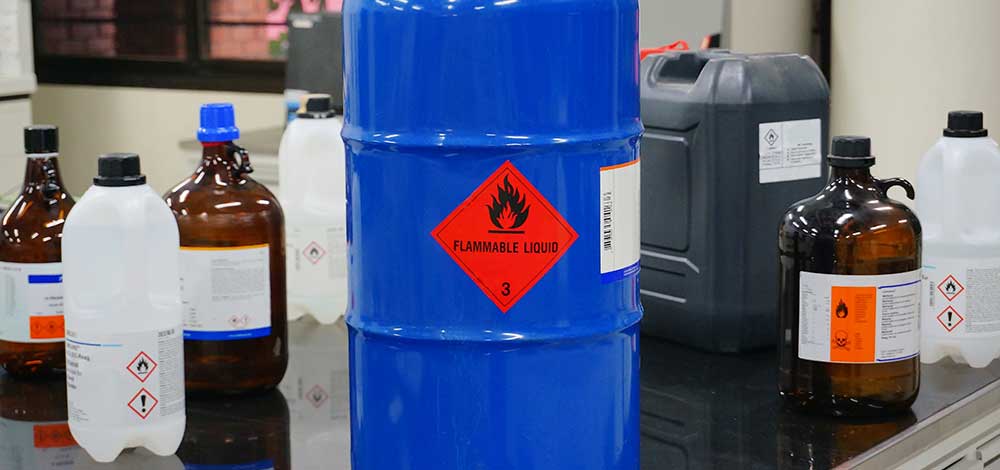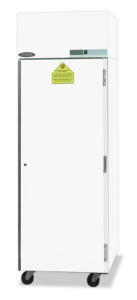
How to Specify a Flammable Refrigerator
Refrigerator explosions, while thankfully rare, highlight the critical importance of proper storage for flammable materials. These incidents typically occur when volatile substances are stored in standard refrigerators, where internal electrical components can ignite fumes. To prevent such hazards, it’s essential to understand how to specify a flammable refrigerator that meets safety standards and protects your workplace.
Understanding the Difference Between Flammable and Explosion-Proof Refrigerators
It’s crucial to distinguish between flammable storage refrigerators and explosion-proof refrigerators:
Flammable Storage Refrigerators
These units are designed to minimize the risk of internal ignition by eliminating or modifying potential spark sources within the cabinet. They are suitable for storing flammable materials in environments classified as Class I, Division 2, where flammable vapors are not typically present in explosive concentrations.
Explosion-Proof Refrigerators
These refrigerators are designed to contain an internal explosion and prevent it from propagating to the surrounding environment. They are used in environments classified as Class I, Division 1, where flammable vapors are continuously or frequently present in explosive concentrations.
Key Flammable Refrigerator Safety Standards and Compliance
When specifying a flammable refrigerator, adherence to safety standards is paramount. Workarounds, such as storing flammables in sealed containers within standard refrigerators, are not acceptable and can lead to dangerous situations.
- NFPA Standards: Ensure the refrigerator complies with relevant National Fire Protection Association (NFPA) standards, including NFPA 70 (National Electrical Code), NFPA 99 (Health Care Facilities Code), NFPA 45 (Standard on Fire Protection for Laboratories Using Chemicals), and NFPA 497 (Recommended Practice for the Classification of Flammable Liquids, Gases, or Vapors and of Hazardous (Classified) Locations for Electrical Installations1 in Chemical Process Areas).
- OSHA Guidelines: Adhere to Occupational Safety and Health Administration (OSHA) regulations regarding the storage of flammable materials.
- UL Standards: Look for refrigerators that meet Underwriters Laboratories (UL) standards, such as UL 471 (Standard for Refrigerators and Freezers).
- Class I, Division 2 Compliance: The refrigerator should be designed and labeled for Class I, Division 2 hazardous locations. This means that in normal operating conditions, the area should not have ignitable concentrations of flammable gases or vapors.
Essential Features of a Flammable Refrigerator
- Modified Electrical Components: Internal electrical components, such as thermostats, compressors, and light switches, should be modified or eliminated to prevent sparking.
- Manual Defrost: Manual defrost models are preferred, as they eliminate the need for automatic defrost cycles that can produce sparks.
- No Internal Spark Sources: The cabinet should be free of any potential spark sources, such as internal lights or fans.
- Clear Labeling: The refrigerator should be clearly labeled as “Flammable Storage” on the door.
- Proper Ventilation: Ensure adequate ventilation around the refrigerator to prevent the buildup of flammable vapors.
Best Practices for Flammable Material Storage
- Approved Containers: Store flammable materials in approved containers that are compatible with the substances being stored.
- Clear Differentiation: If your facility has both flammable storage and general-purpose refrigerators, implement clear procedures to differentiate the units. Label general-purpose units as “Not for Storage of Volatile Products.”
- Regular Inspections: Conduct regular inspections of the refrigerator and storage area to ensure compliance with safety standards.
- Training: Provide thorough training to personnel on the proper handling and storage of flammable materials.
The Importance of Investing in Safety
Investing in a properly specified flammable refrigerator is essential for protecting your employees, facility, and assets. The potential consequences of a refrigerator explosion, including personnel injury, death, and property damage, far outweigh the cost of a compliant unit. Avoid using modified residential refrigerators or freezers, as they do not meet the necessary safety standards.
Consult with Our Experts
When specifying a flammable refrigerator, call or chat with our laboratory safety professionals or equipment specialists who can provide guidance on selecting the appropriate unit for your specific needs and ensure compliance with all applicable regulations.

